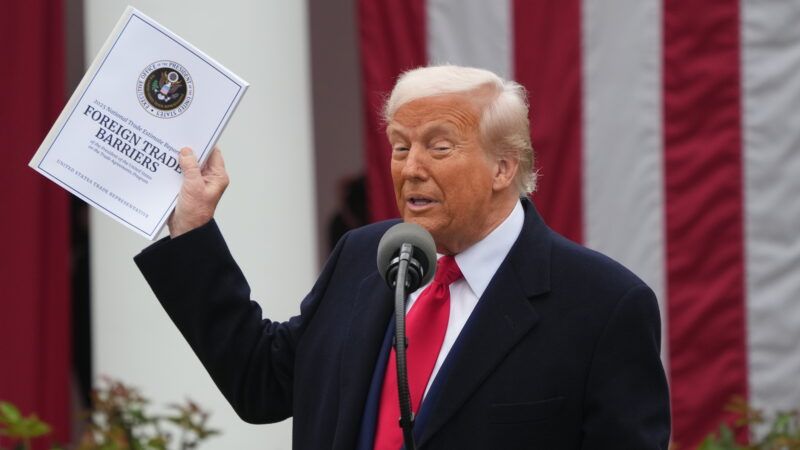Trump's New Trade Deal Has a Clear Winner: Vietnam
Americans will continue to pay higher tariffs, while Vietnamese businesses won't pay anything. Whatever happened to reciprocity?

In the lead-up to the "Liberation Day" tariff announcement in April, President Donald Trump often stressed the importance of reciprocity. He claimed that raising tariffs on imports from foreign countries was about fairness—and that America would drop tariffs if other countries agreed to do the same.
After the announcement of a new trade deal with Vietnam, we can safely conclude that Trump was not telling the truth about that.
Under the terms of that deal, announced Wednesday, American exports to Vietnam will face no tariffs while Vietnamese goods imported into the United States will face tariffs of between 20 percent and 40 percent. The higher rate is reserved for goods that are shipped through Vietnam from other origins. (The exact details of the deal are reportedly still being hammered out.)
Vietnam is giving the United States "TOTAL ACCESS to their Markets for Trade," Trump wrote on Truth Social as he announced the deal. "We will be able to sell our product into Vietnam at ZERO Tariff."
That's great, but what happened to reciprocity and fairness?
Most of the trade between America and Vietnam is flowing in one direction. In 2024, America exported just $13 billion worth of goods to Vietnam but imported more than $136 billion worth of stuff from there. The U.S. was the top export market for Vietnamese goods, which include a wide range of products like electronics, industrial machinery, household goods, clothing, shoes, and toys.
All of that, under Trump's trade deal, will face a 20 percent tax when it enters the country. The Penn Wharton Budget Model's tariff simulator estimates that a 20 percent tariff on all imports from Vietnam would generate between $18 billion and $29 billion in federal taxes, depending on how consumers respond.
Yes, 20 percent is better than the astonishing 46 percent tariff that Trump threatened to slap on Vietnamese imports in April, but it's still a huge amount of taxes that will be paid by American consumers and businesses.
In that regard, this deal looks a lot like the other preliminary deals Trump has struck with China and the United Kingdom. In each, foreign businesses and consumers got lower tariffs and Americans got hit with higher ones.
Yes, in fairness, tariff-free trade into Vietnam is good news for American farmers and manufacturers that export goods to that country, as Commerce Secretary Howard Lutnick has argued. And the reduction in tariffs may marginally increase our exports to Vietnam.
For the vast majority of Americans, however, trade with Vietnam matters on the buying side, not the selling side. For them, this deal accomplishes very little.
The deal also sends a clear signal to other countries that Trump's promise of reciprocity was bullshit.
"Vietnam's trade deal with the US is a wake-up call for Asian governments grappling with the reality that higher tariffs are here to stay," reports Bloomberg. "What we learned from the Vietnam deal is, if anything, the tariffs are going to go up from here, not down," Sebastian Raedler, head of European equity strategy at Bank of America, told CNBC.
Free trade between the U.S. and Vietnam would be a win-win for both countries. That's not what Trump has delivered with this deal. Vietnamese businesses and consumers got free trade. Americans got more taxes.
There was a clear winner in this negotiation, and it wasn't Trump.
Show Comments (49)